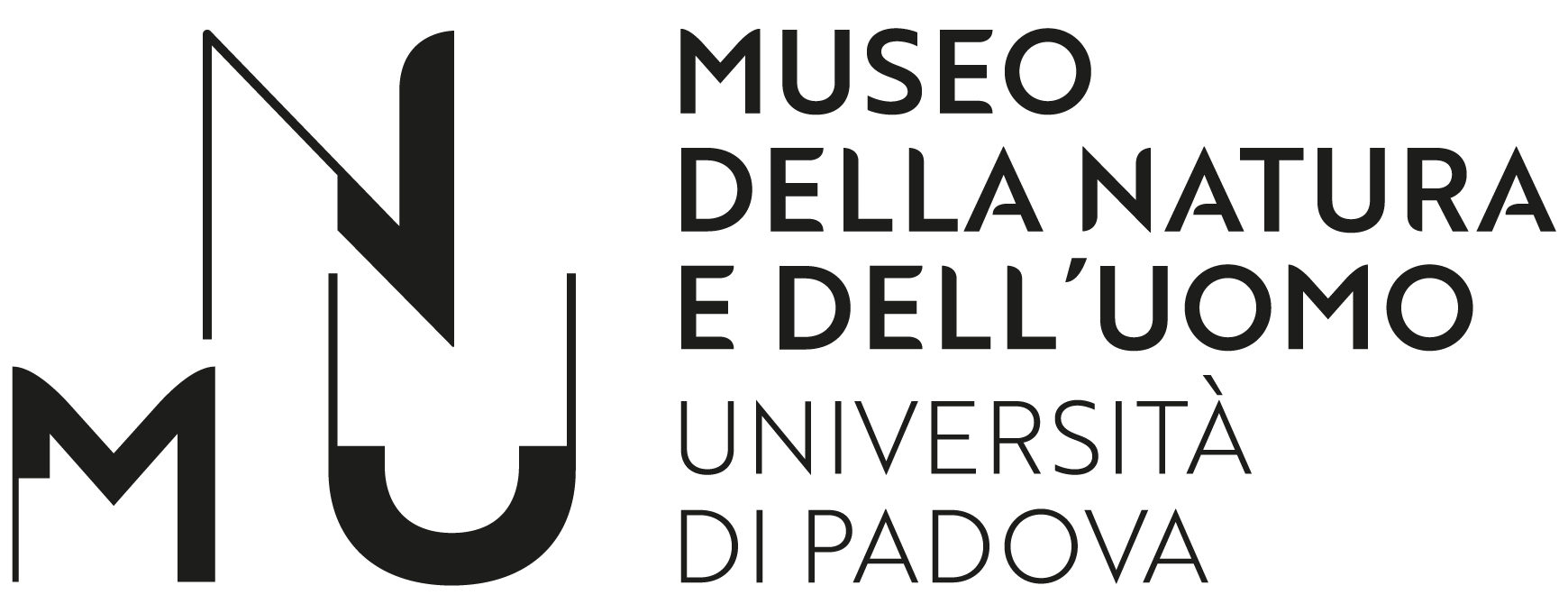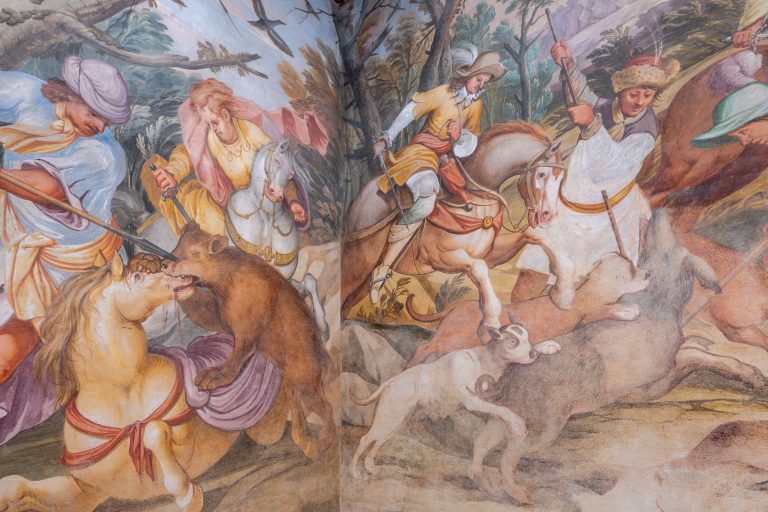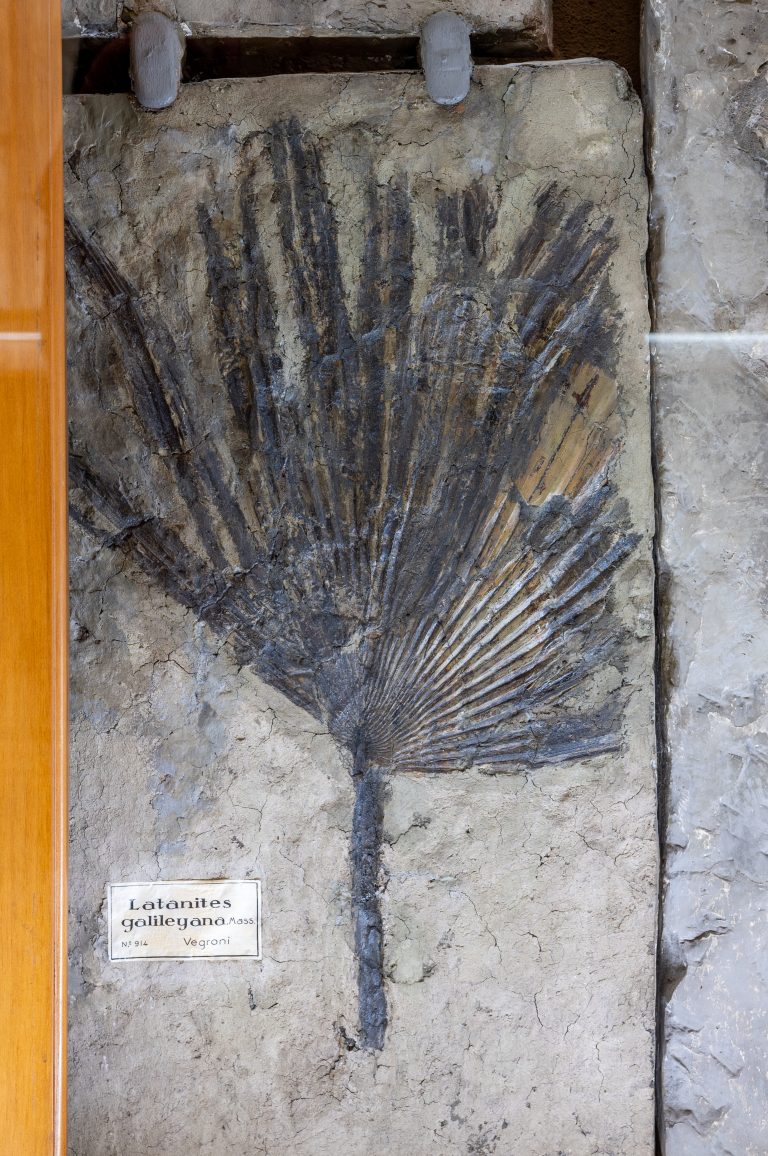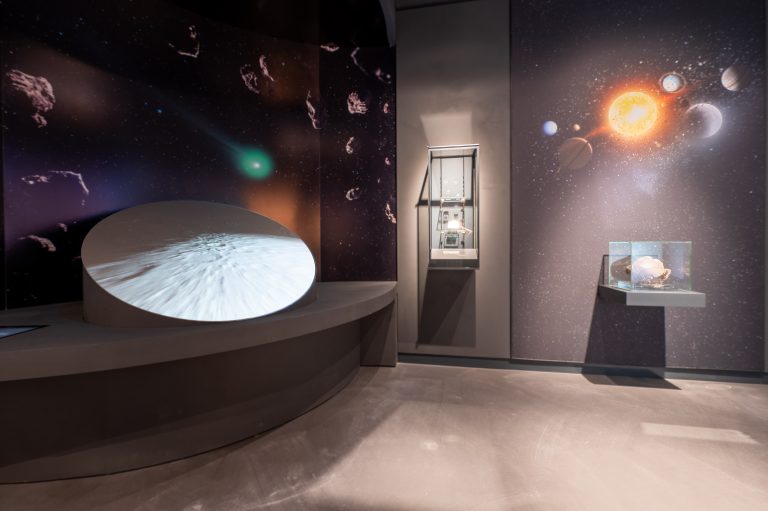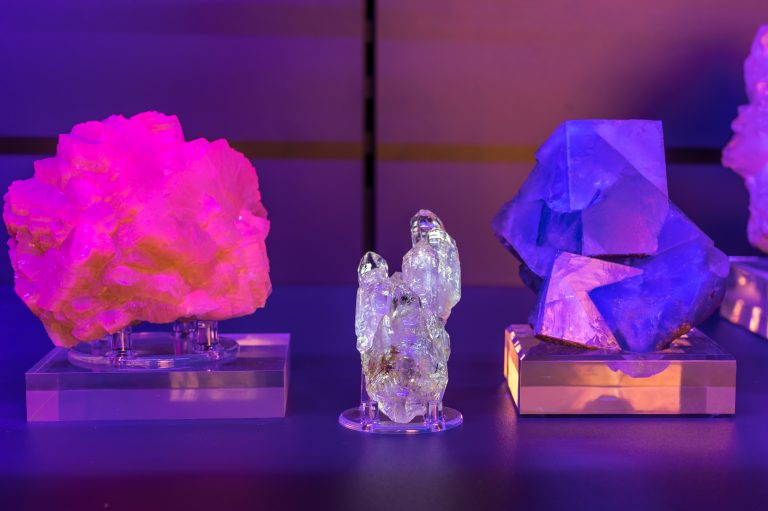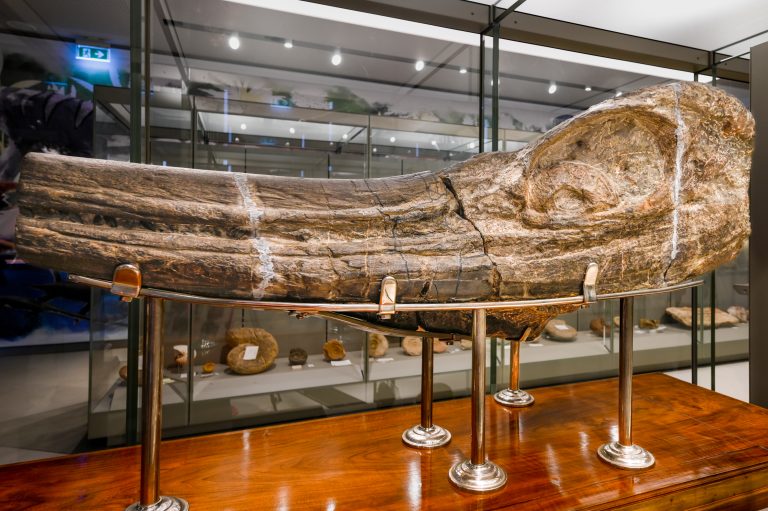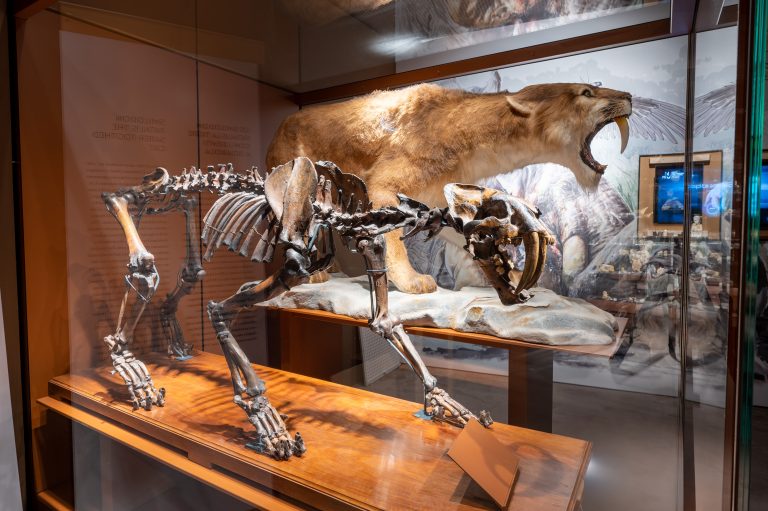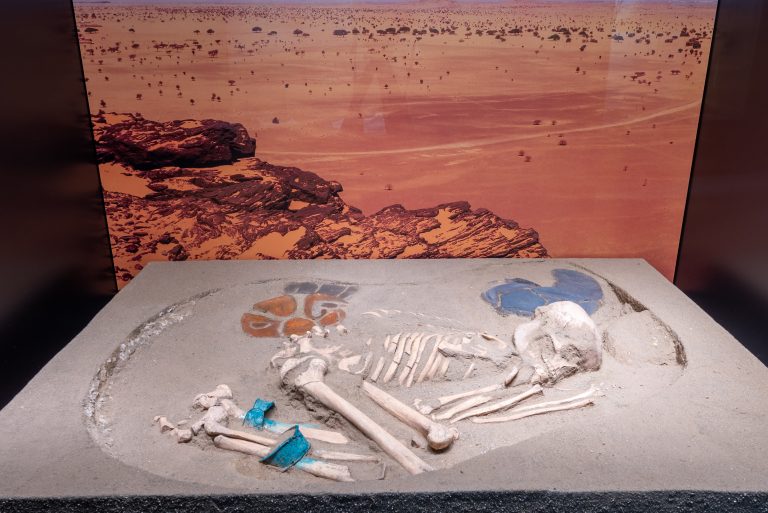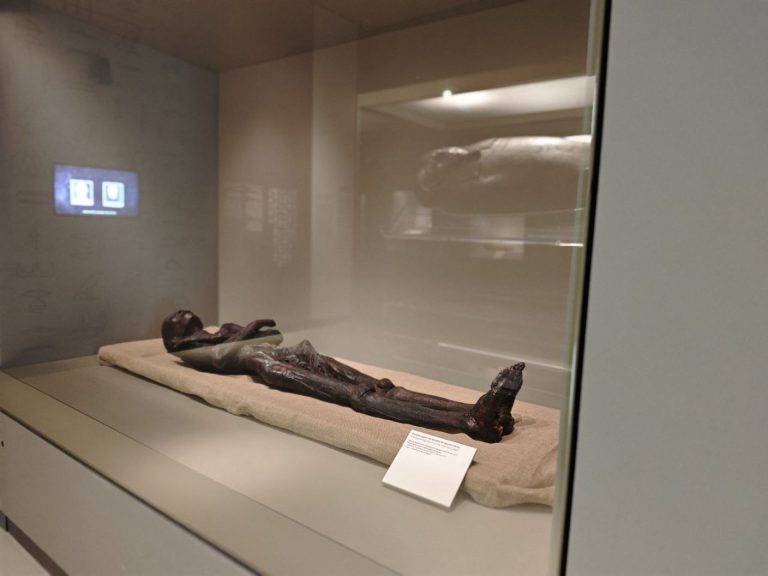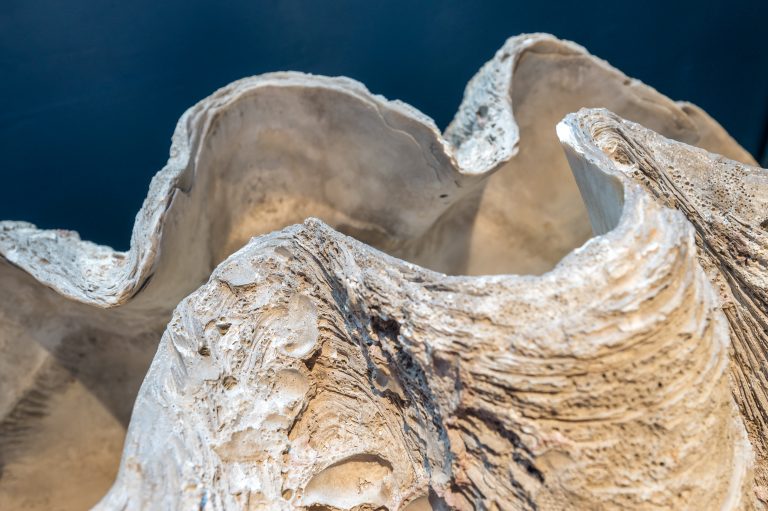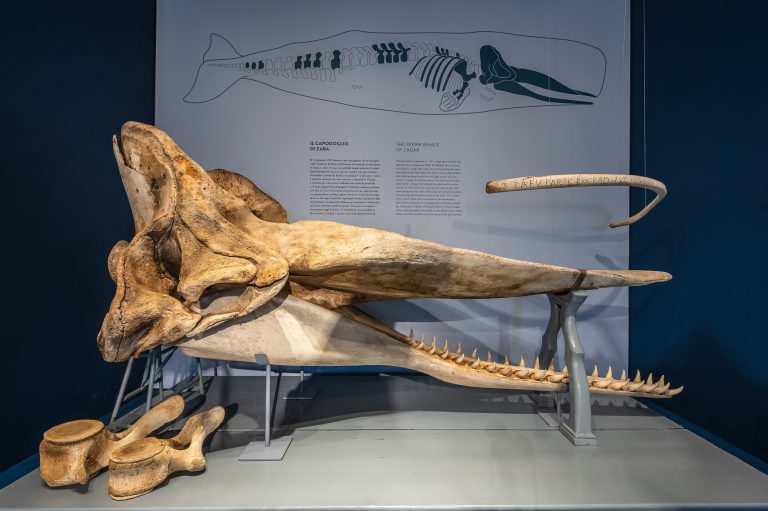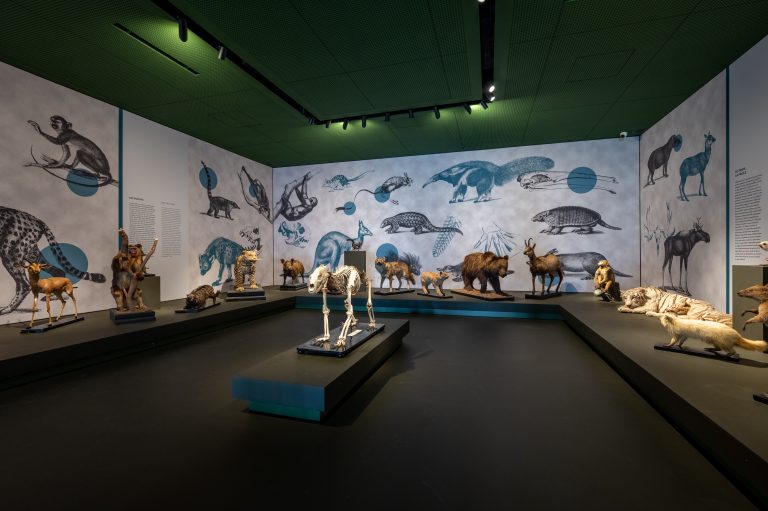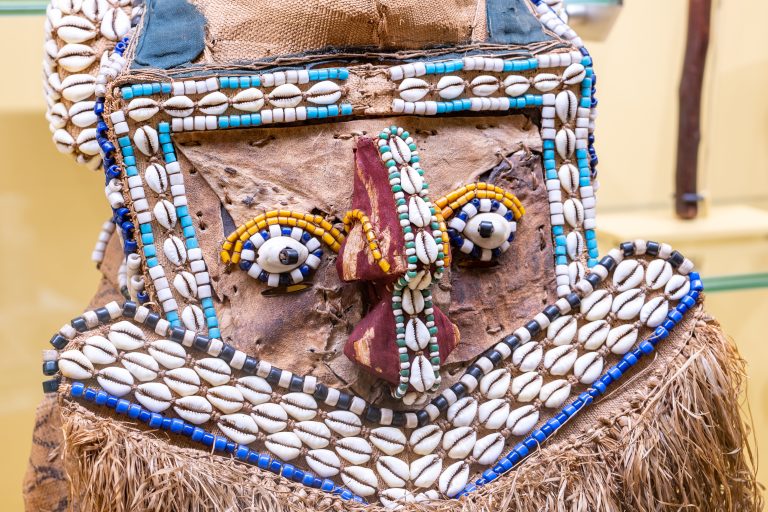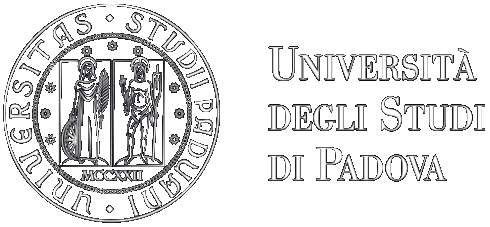Durata: n.d.
Tappe: 13
The Museum is large and the invitation is to return and visit it many times, but for the first time this itinerary is available which offers a selection of some of the most important and spectacular finds and objects in the exhibitions.
1. Frescoed halls
Palazzo Cavalli was built in the mid 16th century, and the balanced distribution of rooms around a central “portego” bears witness to its Renaissance origins. The imposing and sumptuous cycle of frescoes decorating its reception halls can be dated on the other hand to the second half of the 17th century and reflects the Baroque taste for wonderment, with sophisticated trompe l'oeil features. Strolling through the historic rooms of the Museum, the more inquiring and discerning visitor can admire the beauty of the frescoes, exploring the stories they tell, the symbolisms and the hidden details, and at the same time understand their dialogue with the extraordinary exhibits on show, enjoying a truly unique experience.
In the atrium the viewer can digest the “exploits” of the noble house, ponder the metamorphosis of Ovid and glimpse the amours of Jove and Apollo.
In the Room of Roman Stories, the leatherback sea turtle looks up at frescoes inspired by the writings of historians Titus Livius and Valerius Maximus, with female figures of varying morality as the subjects.
Items in the Room of the Hunt include the prized ostriches of the historical collection: depicted on the walls are various types of hunt, including the hunt for the white ostrich!
Old Testament scenes in the Room of Bible Stories seem almost to suggest the point from which Charles Darwin began the thought process that led ultimately to the publication of his work On the Origin of Species, of which the first Italian edition is exhibited here.
The historical tour ends with the Scalone d’Onore, a monumental staircase affording a physical and spiritual ascent accompanied by the Muses: Calliope and Melpomeni on the lower floors, Urania and Clio further up. And waiting at the top is Apollo, face turned upwards as if to welcome the light coming from above. In point of fact there was originally an octagonal roof lantern overhead, but it was removed in the late 19th century.
2. Palm Tree Hall
On display in this room — still arranged in the original captivating layout — are fossils of plant species. On the walls, large slabs of palm and other plant fossils from sites in the Veneto; in the central display cases, other paleobotanical finds. Completing the installation is a video on the history of how plants have evolved, another on Darwin’s Theory of Evolution, and another which, combined with sounds played in the room, amplifies the visitor experience via an artistic presentation of the fossil exhibits.
3. Meteorites
This room explores the geology of extraterrestrial bodies. Exhibits include extremely rare fragments of meteorites indicating, in particular, what the composition of celestial bodies would have been billions of years ago. A video explains the different types of meteorites and their mechanisms of formation. A projection lets viewers explore the geology of the Moon and the planet Mars.
4. Fluorescent minerals
Light is essential to appreciate crystals, their transparency, their charm, the flashes that light rays light up reflecting on the faces… but the electromagnetic waves with different wavelengths that penetrate the crystal also produce a multiplicity of physical effects - complex chemicals (absorption, refraction, birefringence,…). If the incident waves are in the field of visible light, the most evident effect is the colour: the crystals take on the most varied colors as a result of complex mechanisms of absorption of specific frequencies. But crystals reserve us other and unexpected surprises: if the incident waves have more energy than visible light (for example in the field of UV radiation), then other electronic excitation mechanisms take over and also minerals which are colorless or white take on bright and intense colors, and those that already had color can change completely and take on fantastic new hues. It is the phenomenon of luminescence, which lasts as long as the crystal is subjected to irradiation. Sometimes it persists for some time even after excitation: it is the phenomenon of phosphorescence. The colors that the mineral assumes when irradiated are indicative of its nature and of the chemical elements present in the crystalline structure.
5. Ichthyosaurus
Ichthyosaurs are a group of Mesozoic marine reptiles that were completely adapted to the aquatic environment. Their hydrodynamic bodies were similar in shape to those of sharks and dolphins. They had an inverted heterocercal tail with the spine extending to the lower part of the caudal fin. Most ichthyosaurs were predators, feeding on fish, molluscs (mainly cephalopods), arthropods and marine reptiles, including smaller ichthyosaurs. Fully adapted to marine life, ichthyosaurs never reached the mainland and were viviparous, giving birth to live offspring that developed in the mother's body, as evidenced by the fossilised female ichthyosaurs with their newborn babies or with embryos still in their abdomens. The average length of ichthyosaurs was 2 metres, but much larger specimens are known, such as the Lower Jurassic Temnodontosaurus sp. from England exhibited in the museum.
6. Sabre-Tooth Tiger
Smilodon fatalis, the famous sabre-tooth tiger and icon of the Ice Age: this original specimen is the only one of its kind in Italy and one of the few present in European museums. This fossil dates back to the late Pleistocene and comes from Rancho La Brea in California (USA), one of the most important fossil deposits in the world due to the quantity and variety of species found there. The Smilodon genus lived in the Americas about 2 million years ago. This large feline’s hallmark trait lies in its enormously developed canines that made it a fearsome predator. It probably lived in a herd and could hunt large herbivores, such as mammoths, but it may also have fed on carcasses. Measuring more than 2 metres in length and about 1.20 metres in height at the withers, it could weigh up to 300 kg.
7. Al-Khiday's site
In the hall of Al-Khiday (Sudan) human remains and material traces of different populations are exhibited which, in chronological phases ranging from 12,000 BC. at the end of the 1st century AD, lived along the Nile valley, about 25 kilometers south of the confluence of the White Nile with the Blue Nile.
8. The mystery of the mummy
The mummy and sarcophagus was donated to the University of Padua in 1835 by Giuseppe Acerbi – former Consul General of Austria in Egypt. The sarcophagus is made of wood — cypress — and the hieroglyphic inscription attributes it to Baankh, administrator of the temple of Heka in Heliopolis. He was certainly an important figure, as is evident from the rich funerary items and the high quality mummification. Now almost entirely unswathed, the mummy was prepared in a supine position with the upper limbs bent and folded across the chest; the palms of the hands face downwards and the lower limbs are extended. In June 2012, this mummy and other mummified Egyptian items in the collection of the museum underwent a CAT scan carried out by the Radiology section of the Department of Medicine at the University of Padua. The scan was able, most significantly, to establish what had been the causes of the individual’s death: and it was a violent death. From a collaboration with the State Police, which involved ‘cold case’ investigation methods, the wounds on the body indicate that Baankh was attacked and probably killed.
9. Tridacna
Tridacna is a genus of bivalve molluscs, clams, which inhabit the shallow waters of warm seas in the Indo-Pacific region. Species belonging to this genus have an extremely large mantle displaying brilliant colours, the tissue of which is occupied by photosynthetic algae — zooxanthellae.
The symbiotic relationship with these algae enables the mollusc to secure up to 70-100% of the nutrients it needs, while filtering sea water to make up the remainder. There are ten species of tridacna, but only Tridacna gigas grows to more than one metre in length. Our specimen, which measures 97 cm in diameter and weighs around 200 kg, is one of the biggest exhibited in Italy.
10. The Zadar sperm whale
On 31 January 1767, during a heavy sea, the inhabitants of a village near Zadar on the Dalmatian coast saw a tall spout of water, and in the waves below it, a sizeable dark mass. Straight away, four large boats with twenty or so sailors aboard, “armed with rifles and axes”, ventured out toward the enormous animal, which was unable to get away from the shore. The sailors let off a volley of bullets at the animal and “the water became blood red”, but it continued to struggle for fully six hours, capsizing one of the boats with a blow of its tail and biting into another, before it was killed by a blow to the head with an axe. The remains of the whale were recovered by the Serenissima and taken to Padua, a prized addition to the University’s Laboratory of Natural History. What remains of this specimen today are the skull, the jaws, fifteen or so vertebrae and ribs, and a few bones of the pectoral fins. The bones of the head, which at the time were assembled wrongly, with the skull upside down and the jaws detached in the manner of a whale, were restored to their correct anatomical position.
11. Gallery of Mammals
A large hall houses specimens of terrestrial mammals (skeletons and taxidermies) from all over the world: large elephants and hippos, lions, armadillos, anteaters... The concept of biogeography - the principle that the distribution of species on the planet follows geographical gradients and environmental factors - is explained by a video, while another introduces marsupials and monotremes. By playing a game, visitors can also discover evolutionary convergences between marsupials and placentals.
12. Phrenological skulls
Phrenology is a pseudo-scientific theory according to which from the conformation of the skull it is possible to trace the development of certain areas of the brain, the seat of particular psychic functions. The basis of this theory was worked out by the German physician Franz Joseph Gall (1758-1828).
In the first years of the 19th century this discipline became a social and salon practice. This fate was caused by a principle of phrenology which theorized that human instincts and talents having so many cerebral areas reserved for them, these areas constituted as many small brains, which manifested themselves on the external surface of the skull with visible and palpable protuberances or bumps, so much so that it was possible to recognize, by sight and touch, the intellectual and moral qualities of each individual. Hence the saying "have the bump for", referring to a person with particular aptitudes towards a discipline.
13. Mashamboy mask
Masks of this kind were used in ritual contexts. Made from vegetable fibres and embellished with wooden elements, cowries and beads, these items were originally a royal emblem. The mask was worn by the king himself during the dances that preceded his inauguration ceremony. It was then stored until the day of the king's death, and displayed together with his body before burial. A similar specimen was used by village youths during the Babende (initiatory ritual). In recent years, the mask has reappeared in folk performances, spurred by a growth in tourism.
